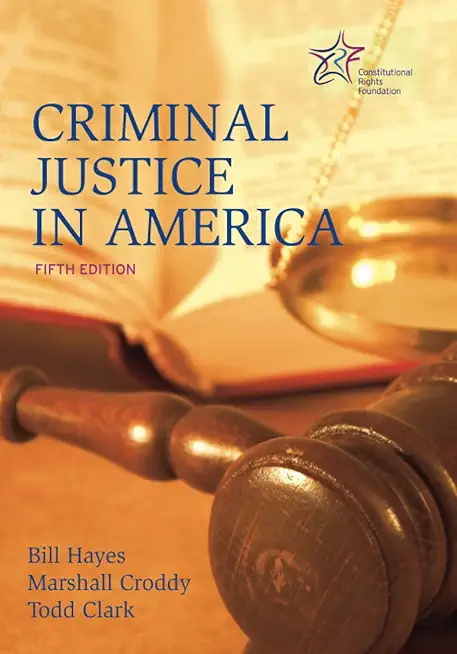
description
dition, is the most comprehensive secondary criminal justice text. Our most popular publication, Criminal Justice in America is the most comprehensive secondary text available on the subjects of criminal law, procedure, and criminology. It can serve as a text for an entire law-related education course, or as a supplement for civics, government, or contemporary-issues courses.
Its extensive readings are supported by:
- Directed Discussions
- Role Plays
- Mock Trials
- Cooperative and Interactive Exercises
- Activities to Involve Outside Resource Experts
- Research Activities for Students to Use the Library or Internet
The Student Edition is divided into six units:
- Crime covers elements of crimes, violent crime, gangs, property crime, inchoate crimes, hate crimes, computer crimes, white-collar crime, crimes against the justice system, legal defenses, methods for measuring crime, victims' rights, and the history of crime in America.
- Police explores local police, attitudes toward police, community policing, criminal investigations, forensic science, search and seizure, Miranda, the exclusionary rule, racial profiling, corruption, use of force, policing the police, and the history of law enforcement.
- The Criminal Case examines courts, judges, prosecutors, defense attorneys, plea bargaining, and the rights of criminal defendants. Most of the unit explores a hypothetical criminal case from arrest through trial.
- Corrections looks into sentencing, prisons, alternatives to prison, capital punishment, theories of punishment, the history of corrections, and debates such as those over crack-cocaine sentencing and the high number of persons behind bars.
- Juvenile Justice explores the separate system for juveniles and examines delinquency, status offenses, steps in a juvenile case, rights of juveniles, school searches, sentencing of juveniles, waiver to adult court, juvenile corrections, how the system developed, and current debates.
- Solutions looks at debates over the causes of crime, racism in the justice system, crime in schools, vigilantism, policy options to reduce crime and to make the system fairer, and options for individual citizens.
member goods
No member items were found under this heading.
Return Policy
All sales are final
Shipping
No special shipping considerations available.
Shipping fees determined at checkout.







